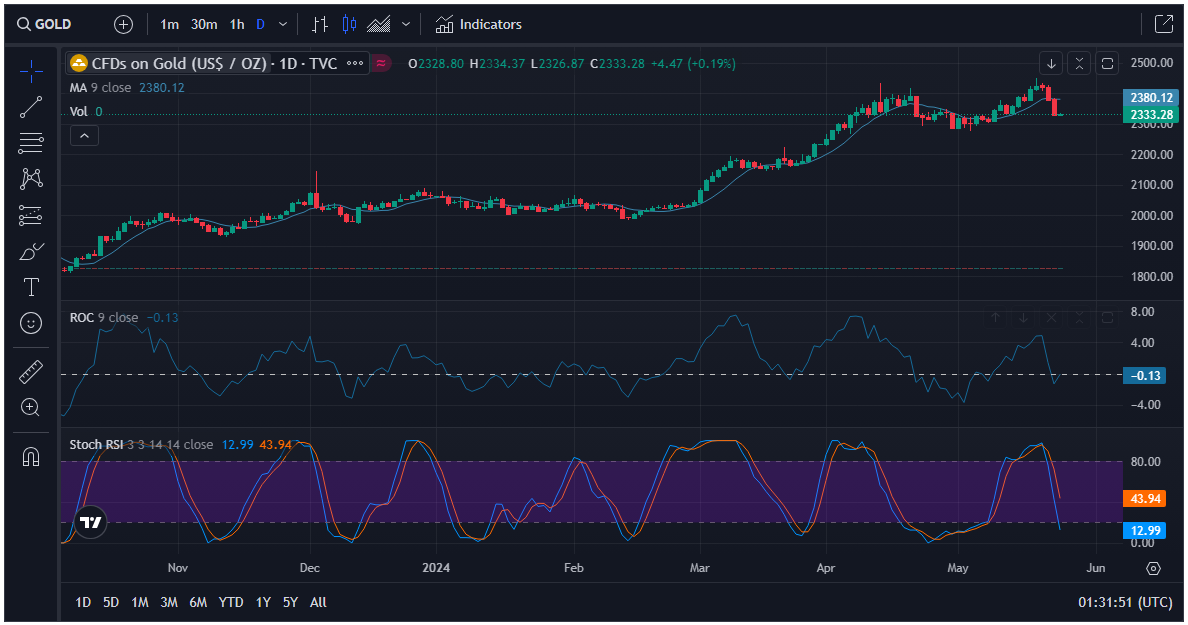Gold prices extended their sharp decline into a third consecutive session on Thursday, tumbling to fresh one-week lows as a wave of upbeat US economic data boosted Treasury yields and the US dollar, while diminishing expectations for aggressive interest rate cuts by the Federal Reserve.
At the time of writing, the precious metal is trading at $2,332, down a staggering 1.90% after hitting an intraday high of $2,383. The selloff was exacerbated by mounting concerns that the Fed may need to maintain its hawkish policy stance for longer to bring inflation under control.
The latest catalyst fueling gold’s bearish momentum was a slew of robust US economic indicators. The S&P Global US Composite PMI, a closely watched gauge of business activity, surged to 54.4 in May, well above forecasts and the previous month’s reading, signaling a gathering pace of economic expansion.
Additionally, weekly jobless claims data from the Labor Department pointed to sustained strength in the labor market, with new filings coming in below estimates at 215,000, further easing fears of an imminent recession.
In response to the upbeat data, US Treasury yields surged, with the 10-year rate climbing five basis points to 4.477%. Higher yields boost the opportunity cost of holding non-yielding bullion, making it less appealing to investors.
Compounding gold’s woes, the US Dollar Index (DXY) extended gains, climbing 0.18% above the 105 level, as the prospects of the Fed retaining higher interest rates for longer bolstered the currency’s appeal.
Market pricing based on data from the Chicago Board of Trade now reflects expectations for a mere 27 basis points of Fed easing by the end of 2024, a sharp contrast from earlier anticipations of more aggressive rate cuts.
However, central bank buying from emerging markets has provided some support for gold prices. According to the World Gold Council, central banks have accumulated around 2,200 tons of the precious metal since Q3 2022, with Western sanctions on Russia following its invasion of Ukraine acting as a key catalyst.
Technical Perspective: Gold Bulls Aim to Defend $2,300 Support
From a technical standpoint, gold’s near-term momentum has shifted in favor of sellers, with the Relative Strength Index (RSI) dipping below the 50-midline, signaling increasing bearish pressure.
The immediate support for gold prices rests at the May 13 low of $2,332, followed by the May 8 trough of $2,303. A decisive break below these levels could expose the 50-day Simple Moving Average (SMA) around $2,307.
Conversely, if buyers regain control, the first resistance lies at the $2,350 level, with the $2,400 mark and the year-to-date high of $2,450 emerging as further upside targets.
As the tug-of-war between inflation and growth dynamics continues to unfold, gold’s trajectory will be closely tied to the evolving interest rate outlook and the Fed’s policy guidance, underscoring the precious metal’s sensitivity to shifts in the broader macroeconomic landscape.












